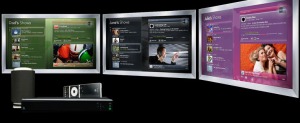Hands up, anybody who has ever controlled their TV, DVR, game console, DVD player, or other fancy video gadget using the Web rather than a maze of slow clicks on an old infrared remote control.
Anybody? Congratulations, both of you.
I’ve been playing with Verizon’s newly updated Web-based remote control feature to do exactly that and I’m telling you, it’s sweet. Sorry that most of you aren’t FiOS TV subscribers so you won’t be able to try it, but for the few who are, give it a trial run.
You have to have an HD DVR and you have to sign up first, but within 24 hours they’ll get you up and running. You can then log in and control your DVR from your PC. If you’ve ever fallen asleep waiting for your DVR to respond to your remote control as you wade through a labyrinth of menu options, you’ll appreciate the speed and efficiency of this solution.
Here you see me deleting yet another episode of Bob the Builder, all in the name of research.
Controlling complex TV equipment from the PC is a no-brainer — the next step will be to port all of that control to the mobile phone.
To wit, I’ve been playing with the iPhone app that controls the Boxee player (which as faithful readers will know I have placed on my hacked Apple TV with much rejoicing). Boxee is relatively simple to control with the Apple TV remote (though I my kids keep losing the tiny thing) so it’s not like you need to turn to the iPhone app, but why not? Once you start getting the hang of controlling things from a more intuitive interface (the PC with a mouse, the iPhone with its touch surface), it makes you realize that the future of living room control is not to have a $500 Logitech universal remote or even to put a touch screen on your TV set. It’s much simpler than that — we’ll all just use our mobile phones to control our TVs, DVRs, game consoles, and everything else CE makers conspire to place in our living rooms. And that control can be live, as in, here’s what I want to watch right now, or offline, as in, let’s delete all of those Palladia concerts I recorded in HD while I was convalescing that now consume half the DVR hard drive (sorry, Neal Peart and the rest of the Rush gang).
Once we have a protocol for letting mobile devices speak to the TV, they won’t be limited to simple command and control functions. Here are a few scenarios that I can easily conjure:
- Want to play Uno on the TV? Okay, you might prefer harder fare when you think of card games. Either way, we can’t play card games at our house until the little ones are in bed because they gnash and tear at the cards. In fact, we can’t play card games at our house after they go to bed because of aforementioned history of gnashing and tearing has depleted our card reserves. But in a mobile-controlled TV world, bent cards are a thing of the past. Imagine if each player could employ their own mobile phone as their hand. The TV can keep the draw pile, the tableau, or whatever else the game requires.
- Let me share my photos with you. Today people share pictures and video taken on their mobiles by gathering around the 3-inch screen or posting them on Facebook. But nothing’s more immediate than “publishing” my photos directly to your Connected TV or cable set top box when I drop by for a visit, either over wi-fi or the 3G network. And if I can share photos with your TV from my iPhone, why can’t I also “publish” my mp3 playlist to your surround sound speakers?
- Need a keyboard, anyone? As more and more of your friends get Connected TVs and are joining chat rooms to swap ideas about the latest episode of Fringe while it’s airing live, you’ll be the one who doesn’t have to use a cumbersome USB keyboard to add your $.02 to the chat. With an iPhone or Android app that speaks to your Connected TV, you’ll be good to go — whether to enter a username and password or for constructing lengthy analyses of Agent Dunham’s wardrobe.
Your turn, I’m sure you have better ideas of what such a mobile-controlled TV world could be like. Add your comments and let’s see what rises to the top.




 Posted by James
Posted by James 

You must be logged in to post a comment.